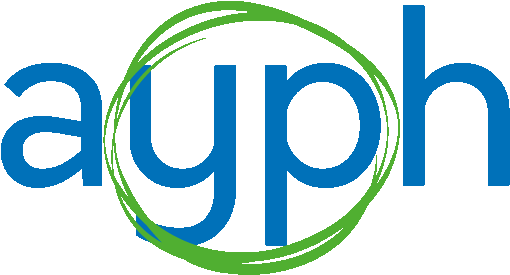New changes to food labelling may have particular implications for young people who experience weight issues or eating disorders. AYPH’s Jeremy Sachs outlines the issues.
From April 6 2022, restaurants, cafes and takeaways with over 250 staff are required to print how many calories are in meals on their menus, websites, and delivery apps (Just Eat / Deliveroo etc.)[1] The aim of this is to tackle the UK’s increasing obesity crisis.
One group affected by the prevalence of obesity is children and young people. Among four and five-year-olds obesity prevalence rose from 9.9% in 2019-20 to 14.1% in 2020-21. Among 10 to 11-year-olds, the increase is from 21% to 25.5% in the same period.[2] Excess weight in children and young people comes with multiple physical health complications, as well as concerns specific to this age group. The first indicators of longterm health conditions begin at this age, including ¾ of life long mental health disorders. Poor healthcare at this time can echo throughout a young person’s adulthood.
Criticism of calories on menus has been loud. Partly this has been around questioning the policy’s effectiveness. One older study in the US observed only “…a small decrease in mean calories purchased per transaction (approx. 60 calories) after implementing calorie labelling in a large franchise of fast-food restaurants. This reduction diminished over one year of follow-up.[3]
Nutritionally too it misses some critical factors about the importance of food; fibre, carbs, proteins etc. However, the criticism that chimes the loudest in the psychological world is the effect calorie counting will have on eating disorders, particularly for young people living with them. I spoke with Zoe Burnett, board member of the International Society of Psychotherapists and Counsellors and Specialist Support Officer at First Steps, an organisation who work across the midlands and the rest of the UK, providing care and support for children and their families, young people and adults affected by eating difficulties and disorders. She told me that “…one in four young people who start to count calories develop disordered eating.” and about working with young people specifically to not count calories, as part of recovering from an eating disorder. She fears that listing calories on menus will catalyse the eating disorder voice[4] that fuels destructive and sometimes fatal behaviours around food.
“What helps your young people with eating disorders?” I asked her. “Trained professionals who can work holistically, peer support and support with mental health,” she answered.
 These interventions don’t only benefit young people with eating disorders. On April 6 2022, AYPH published their work with SHINE Academy, highlighting the needs of young people and parents living with excess weight issues. AYPH carried out engagement work with young people and their families and a scoping review of existing research on young people’s perspectives on excess weight and related health services. A summary of both reports says young people living with excess weight issues value:
These interventions don’t only benefit young people with eating disorders. On April 6 2022, AYPH published their work with SHINE Academy, highlighting the needs of young people and parents living with excess weight issues. AYPH carried out engagement work with young people and their families and a scoping review of existing research on young people’s perspectives on excess weight and related health services. A summary of both reports says young people living with excess weight issues value:
- An appreciation of and response to the mental health elements of their experiences.
- Healthcare staff and doctors who explained things clearly, with an empathic and non-stigmatising approach
- Peer support in safe community settings
These findings appear to mirror the needs of Zoe’s young people at First Steps managing eating disorders. The message from both groups of young people with experience of excess weight and eating disorders seems clear, it is essential to work holistically, be mindful of how mental health affects eating behaviours, enable access to empathic professionals and peers, and put young people’s voices at the centre of their own support and healthcare.
This also leaves the question of whether, if there is a similarity in what young people want in their treatment, could that also be reflected in the risk factors for both issues? A study from 2006, Prevention of obesity and eating disorders: a consideration of shared risk factors, [5] pointed to psychosocial pressures; media, weight-related teasing etc. and suggests that “identification of risk factors that are shared among these weight-related disorders is an essential step to developing effective prevention interventions.” Yet they are still viewed and, in some cases, treated differently in health services, as either psychological (eating disorders) or physiological (obesity).
It remains to be seen whether calories on menus impact the way young people eat in the UK. However, with the absence of young people’s voices in public health decision-making, there is a real fear among youth workers, therapists, and charities that it will have the wrong kind of impact, by encouraging eating disorders or exacerbating shame around weight.
Jeremy Sachs is the Engagement Project Manager at AYPH. You can follow Jeremy on twitter here.
References
[1] https://www.bbc.co.uk/news/business-60989825
[2] https://digital.nhs.uk/data-and-information/publications/statistical/national-child-measurement-programme/2020-21-school-year
[3] Estimating the effect of calorie menu labelling on calories purchased in a large restaurant franchise in the southern United States: quasi-experimental study
[4] https://www.nationaleatingdisorders.org/blog/voice-your-head
[5] Jess Haines, Dianne Neumark-Sztainer, Prevention of obesity and eating disorders: a consideration of shared risk factors, Health Education Research, Volume 21, Issue 6, December 2006, Pages 770–782, https://doi.org/10.1093/her/cyl094

